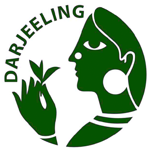History of Tea
Legendary Origins
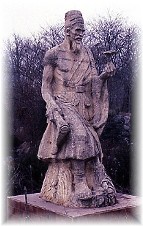
In China, there are various legends about the origins of tea drinking. Most sources,
however, attribute the discovery of tea as a beverage to Emperor Shen Nung (also Shen
Nong; Shen Nong Shi), who reigned in the third millennium BC.
It was in the spring of 2737 BC, when Shen Nung settled down in the shade of a wild tea bush
and requested that his servants boil some water for him. Aware that this would protect him
from diseases, Shen Nung always had his water boiled. While he was sipping the beverage, a
leaf broke off the tea tree, and floated into the water. Thus, the Emperor became aware of
the exquisite flavor of the drink, and he was enthralled by the taste and the refreshing
qualities of the infusion.
The poor servant, however, whose duty it was to make sure that no leaves fell into the
Emperor’s drink, was beheaded. According to popular mythology, his head was wrapped in tea
leaves and buried next to the tea bush.
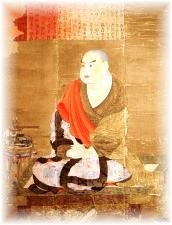
In India, there is another legend. It is about a man called Darma (also Daruma). After a wild and crazy youth, Darma turned to asceticism and became a begging monk. Renamed Bodhi Dharma, he went to China, where he served as a Buddhist missionary. As a punishment for the excessive life of his early years, he made a vow that he would never sleep again. He kept his promise for several years, but one day, sleep overwhelmed him. Full of remorse for having broken his word, he tore off his eyelids and threw them away. When he passed by this place years later, he found an unknown bush on the very spot where his eyelids had fallen to the ground. He plucked some leaves off the bush and steeped them in hot water. When he tasted the beverage, he was granted enlightenment, his weariness was suddenly gone, and his spirits were raised. Ever since monks have been drinking tea during their long hours of meditation, and tea is known as “the beverage of Darma’s eyes” in India.
China
"Tea began as a medicine and grew into a beverage", Kakuzo Okarura states in his famous Book of Tea. Indeed, the Chinese had started to use tea leaves for preparing medicine and vegetable relishes long before Shen Nung’s discovery. But until the incident in 2737 BC, camellia leaves had never been considered as an ingredient of a hot beverage.
Soon, tea became an essential part of Chinese culture. Tea ceremonies evolved, and the beverage became common as an aid to meditation.
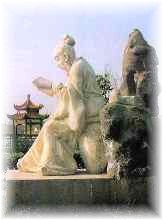
The greatest Chinese authority on tea was Lu Yü, who was born in the middle of the eighths century and died in 824. His The Classic of Tea was the first book ever written about the virtues of tea drinking. It became the most important manual for tea drinkers in Tang China (618-907), and it exerted a great influence on later Taoist and Zen writings.
Lu Yü considered the making and drinking of tea an art. But despite his attention to detail, he insisted on moderation:
"Moderation is the very essence of tea. Tea does not lend itself to extravagance. If a tea is insipid and bland, it will lose its flavor before even half a cup has disappeared. How much more so in the case of extravagance in its use. The vibrancy will fade from the color and the perfection of its fragrance will melt away."
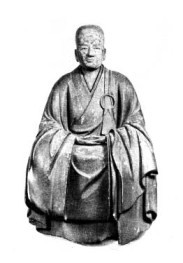
Japan
Tea drinking spread to Japan in the eighth century. Japanese emperors recorded gifts of “700 bags of tea that were given to 700 Buddhist monks” and, later, “the construction of temples in each of which is a large tea garden.” History has it that Eisei (also Esai-ki), a Japanese Zen Buddhist monk, brought tea seeds from China and cultivated them in his own garden. Within a very short time, tea was accepted and internalised in the culture of the country. Tea drinking gradually evolved into a ritual ceremony, the so-called chanoyu (from Japanese cha, tea + no, possessive particle + yu, hot water), held in a special room according to strict rules. The tea ceremony expressed – and still expresses – an art of living that seeks the beautiful in the mundane of life.
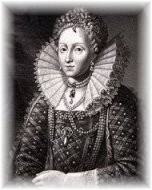
Europe and Great Britain
Western civilization encountered tea in the 17th century. Elizabeth I of England, perceptive about the future of natural resources such as tea, cotton, or wood, chartered the East India Company in 1600. But despite English efforts, it was the Dutch or Portuguese (accounts vary here) who brought the first sample of tea to Europe from Macao in China. The Dutch East India Company first imported tea in 1637; the English began to trade in Chinese tea toward the end of the 17th century.Tea was very expensive in Europe. English companies and European merchants sold it at about twenty times the price they had paid for it. Soon, those in charge discovered the value of this commodity and – sensing profit for the state –levied a tax. Oliver Cromwell was allegedly the first who imposed a tea tax. As a result, tea turned into a much-desired contraband item. History has it that some of the most cunning tea smugglers of the time were among the clergy. Many a tomb, emptied of its human remains, served as a perfect hiding place for bales of tea.
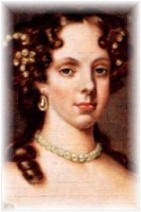
When Charles II ascended the thrown, the popularity of tea grew rapidly. Catherine of Braganza, Charles’s Portuguese wife, was a tea aficionada, and she introduced the beverage to the English court. Now, drinking tea became popular with all classes of society. Whereas in France, Italy, and Spain tea drinking remained a privilege of the upper class, in England and the Netherlands it became a common pleasure. The beverage was sipped in the homes of aristocrats and workers alike, and it was served in taverns and tea gardens. In 1640, Thomas Garaway opened the first tea house in London.
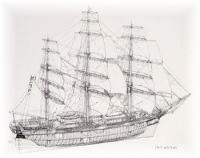 The profitability of the tea trade depended largely on the velocity of
the ships. The need for high-speed vessels gave rise to the 19th
century invention of the clipper ship, a sharp-bowed sailing vessel
with tall masts and pointed lines. Tea occasioned the first
long-distance race between transatlantic sailing ships. It attracted
many spectators in all ports of the world, and high bets were placed on
the winner.
The profitability of the tea trade depended largely on the velocity of
the ships. The need for high-speed vessels gave rise to the 19th
century invention of the clipper ship, a sharp-bowed sailing vessel
with tall masts and pointed lines. Tea occasioned the first
long-distance race between transatlantic sailing ships. It attracted
many spectators in all ports of the world, and high bets were placed on
the winner. The popularity of tea and the economic success of the tea trade were amazing. By 1770, the English were importing 6 million pounds a year. In 1823, it was discovered that tea grew wild in India, and Governor Bentinick started cultivating these leaves. When tea began to be grown systematically in the Indian Empire, the tea trade became virtually all profit for Great Britain, and China lost its preeminence on almost all markets.
Tea reached the height of its popularity in the Victorian era, and ever since, drinking tea has remained a central part of British culture.

